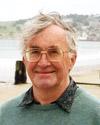Planning worship?
Check out our sister site, ZeteoSearch.org,
for 20+ additional resources related to your search.
- |
User Links
Search Results
At the supper, Christ the Lord
Author: David Mowbray (born 1938) Meter: 7.8.7.8.8.8 Appears in 2 hymnals Hymnal Title: Hymns for Today's Church (2nd ed.) Topics: God's Church Holy Communion Used With Tune: LIEBSTER JESU
At the supper, Christ the Lord
LIEBSTER JESU
Meter: 7.8.7.8.8.8 Appears in 251 hymnals Composer and/or Arranger: J. R. Ahle (1625-1673); J. S. Bach (1685-1750) Hymnal Title: Hymns for Today's Church (2nd ed.) Tune Key: G Major Incipit: 31253 12176 12321 Used With Text: At the supper, Christ the Lord
LIEBSTER JESU
At the supper, Christ the Lord
Author: David Mowbray (born 1938) Hymnal: Hymns for Today's Church (2nd ed.) #394 (1987) Meter: 7.8.7.8.8.8 Hymnal Title: Hymns for Today's Church (2nd ed.) Topics: God's Church Holy Communion Languages: English Tune Title: LIEBSTER JESU
At the supper, Christ the Lord
At the supper, Christ the Lord
Hymnal: Sing Glory #462 (1999) Meter: 7.8.7.8.8.8 Hymnal Title: Sing Glory
At the supper, Christ the Lord
David Mowbray

b. 1938 Person Name: David Mowbray (born 1938) Hymnal Title: Hymns for Today's Church (2nd ed.) Author of "At the supper, Christ the Lord" in Hymns for Today's Church (2nd ed.) David Mowbray (b. 1938) was born in Wallington, Surrey, England. He attended Dulwich College, Fitzwilliam, Cambridge where he read English. He gained an MA at Trinity in Bristol and a BD at London (External). Ordained in the Church of England, he was a curate at St. Giles in Northampton and at St. Mary's in Walford. Appointed Vicar of Broxborne, Herts in 1970 in 1984, he became Vicar of All Saints, Hertfordshire. In 1991 he became Vicar of St. Matthew's Darley Abbey, Derby, where he serves to this day. He has been writing hymns since 1977 and most of his texts are represented by Jubilate Hymns. Three of his hymn texts have been included in Hope's new hymnal Worship & Rejoice (2001).
--www.hopepublishing.com
David Mowbray
Johann Rudolf Ahle
1625 - 1673 Person Name: J. R. Ahle (1625-1673) Hymnal Title: Hymns for Today's Church (2nd ed.) Composer of "LIEBSTER JESU" in Hymns for Today's Church (2nd ed.) Johann Rudolph Ahle, b. Mühlhausen, 1625; Ahle studied theology at Erfurt University. Little is known about his musical education, but be became well known as an organist while he was in Erfurt. He returned to Mühlhausen and became an organist at St. Blasius Church, he composed organ music but is know for his sacred choral music. He was the father of Johann Georg, who was also a composer and succeeded his father as organist at St. Blasius Church. Johann Rudolf became mayor of Mühlhausen late in his life and died there in 1673.
Dianne Shapiro (from Bach Cantatas Website www.bach-cantatas.com/Lib/Ahle-Johann-Rudolf.htm)
Johann Rudolf Ahle
Johann Sebastian Bach

1685 - 1750 Person Name: J. S. Bach (1685-1750) Hymnal Title: Hymns for Today's Church (2nd ed.) Arranger of "LIEBSTER JESU" in Hymns for Today's Church (2nd ed.) Johann Sebastian Bach was born at Eisenach into a musical family and in a town steeped in Reformation history, he received early musical training from his father and older brother, and elementary education in the classical school Luther had earlier attended.
Throughout his life he made extraordinary efforts to learn from other musicians. At 15 he walked to Lüneburg to work as a chorister and study at the convent school of St. Michael. From there he walked 30 miles to Hamburg to hear Johann Reinken, and 60 miles to Celle to become familiar with French composition and performance traditions. Once he obtained a month's leave from his job to hear Buxtehude, but stayed nearly four months. He arranged compositions from Vivaldi and other Italian masters. His own compositions spanned almost every musical form then known (Opera was the notable exception).
In his own time, Bach was highly regarded as organist and teacher, his compositions being circulated as models of contrapuntal technique. Four of his children achieved careers as composers; Haydn, Mozart, Beethoven, Mendelssohn, Schumann, Brahms, and Chopin are only a few of the best known of the musicians that confessed a major debt to Bach's work in their own musical development. Mendelssohn began re-introducing Bach's music into the concert repertoire, where it has come to attract admiration and even veneration for its own sake.
After 20 years of successful work in several posts, Bach became cantor of the Thomas-schule in Leipzig, and remained there for the remaining 27 years of his life, concentrating on church music for the Lutheran service: over 200 cantatas, four passion settings, a Mass, and hundreds of chorale settings, harmonizations, preludes, and arrangements. He edited the tunes for Schemelli's Musicalisches Gesangbuch, contributing 16 original tunes. His choral harmonizations remain a staple for studies of composition and harmony. Additional melodies from his works have been adapted as hymn tunes.
--John Julian, Dictionary of Hymnology (1907)
Johann Sebastian Bach


 My Starred Hymns
My Starred Hymns


